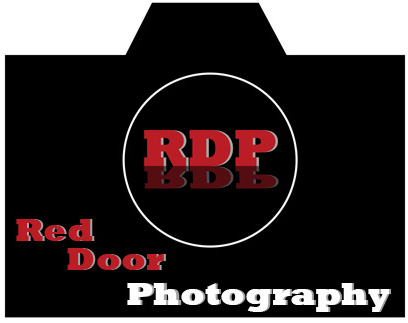
Today we're going to learn a little about aperture. Aperture by definition according to Wikipedia "In optics, an aperture is a hole or an opening through which light is admitted. More specifically, the aperture of an optical system is the opening that determines the cone angle of a bundle of rays that come to a focus in the image plane". What does this mean to us? Well in layman's terms the aperture of a given lens is the size of the opening through which light is passing to reach our film/digital sensor.
When you look at your lens and you see f/2.8 or 3.5, this is referring to the largest opening that can be achieved with that particular lens. The smaller the number, the larger the opening. Thus an aperture of f/22 would be a smaller opening than an aperture of f/2.0. Illustrated above in the image. It sometimes gets a little confusing when you hear, or read someone saying that they went down a stop. What they really mean is they closed the opening in the lens one fstop towards a larger number. For example if you were at f/4 and wanted to go down a stop you would go to f/5.6. Using the sames numbers, if you wanted to go up a stop from f/4 you would change to f/3.5. Sometimes you will also hear people refer to the lower numbered apertures as "wider". Wider aperture just means closer to f/1.4 or whatever the smallest number your lens will go to.
Why would you want to change your aperture? Well there are a few reasons. To get an overall correct exposure you have to balance your aperture with your shutter speed. If you have a shutter speed of say 1/500Th (to freeze action) you may have to set your aperture to f/8. This will make the correct exposure for the image that you are photographing. The other reason for changing your aperture is depth of field. Depth of field refers to the sharpness from front to back of your image. The lower your aperture(the closer to the high numbers such as f22), the more in focus the entire image will be. If you have a beautiful field of flowers and you want every thing in the image to be in focus, you would set your aperture closer to the f22 setting. However the higher the aperture(the closer you are to f/1.8), the less of the image that will be in focus beyond your focus point. For example if you have that same field of flowers but there is one particular rose that catches your eye and you want to just keep that in focus while making everything behind it blurry, you would set your aperture to the lenses lowest setting(closer to the f/1.8 mark).
The lens, not the camera is what determines what the widest or closest to f/1.4 the aperture can be. The lowest setting is usually f/3.5 for most lenses that come with cameras as a package. To get a an aperture of f/2.8 or below you have to either invest in an expensive zoom lens, or what is referred to as a "prime" lens. Prime lenses are a great because the usually are less expensive than their "zoom" counterparts, and can achieve a wider aperture. Because the manufacturer doesn't have as much going on inside of the lens like they do with a zoom lens,prime lenses are also usually better when it comes to image quality. The advantage that the zoom lens has over the prime lens however, is that it zooms. Prime lenses are a fixed focal length, so to increase or decrease the size of the subject, you have to move forward or back. Listen, that's it for me today. I have to get back to work. Don't forget to check out the workshop info below. See you all there! Jason






Thank you for the simple way to explain the whole aperture settings.
ReplyDeleteNo problem. Glad I could help
ReplyDelete